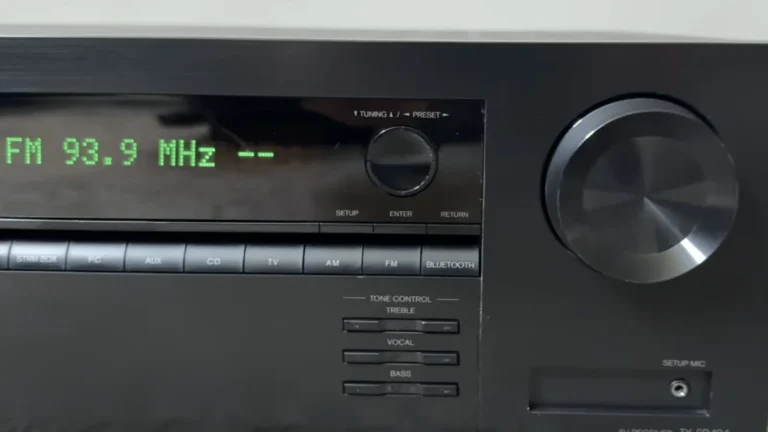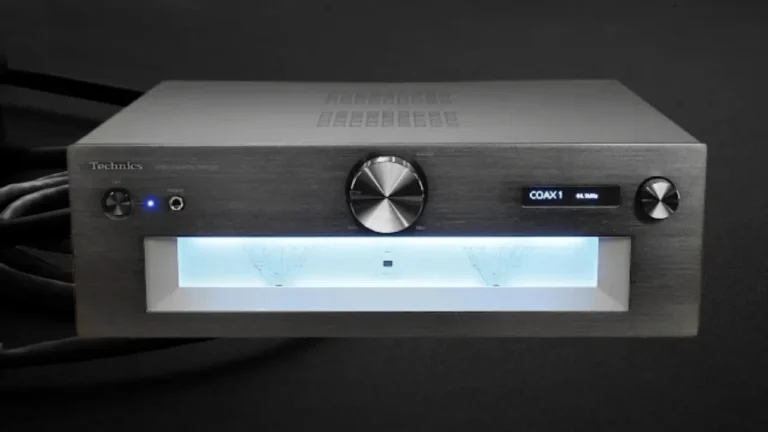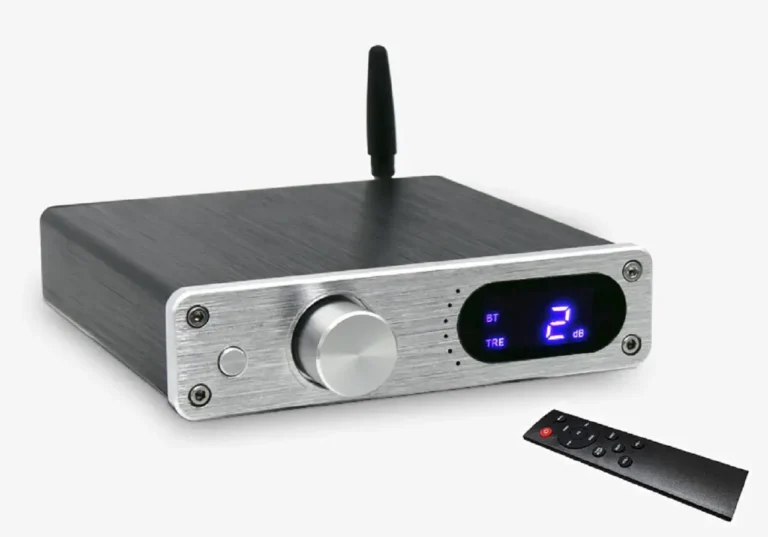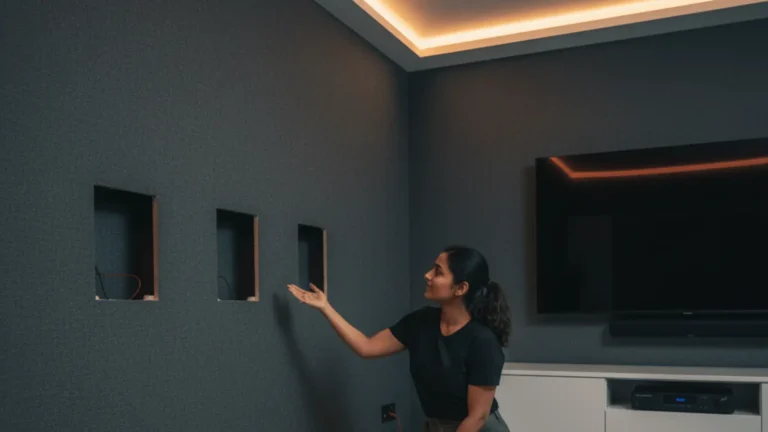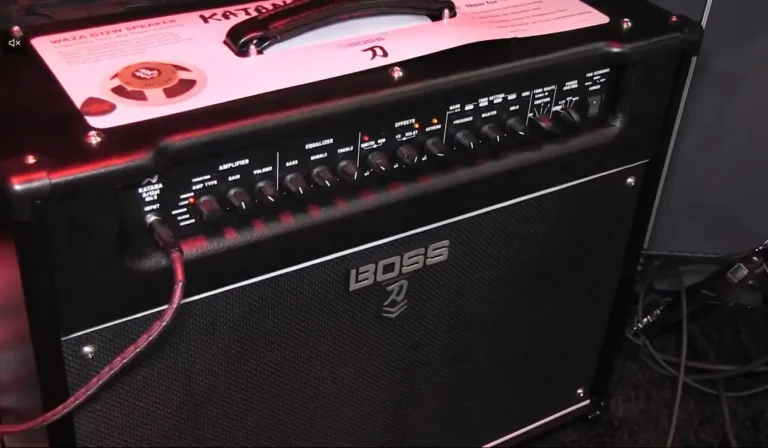bi amp and bi wire difference
Surely, many music lovers, when connecting to an amplifier of a speaker system (AC), have come across
the fact that the speakers are equipped with not two but four terminals, for the pairwise connection of which gold-plated jumpers are used. This design feature makes it possible to use, in addition to the usual, additional options for connecting acoustics – bi-amp and bi-wire differences. This allows you to deal with interference.
You may like: Gustard x-30 Review
Normal connection method of bi-amp
Based on the use of a single amplifier. In this case, each acoustic head receives its share of the signal. The separation of the latter occurs in a special filter inside the speaker system. As you know, the principle of operation of dynamic loudspeakers is based on the interaction of a magnetic field and a conductor placed in it, through which a current passes. And now, let’s remember the law of physics, which we were told about at school: Every action gives rise to a reaction. Following this law, during the operation of the AU, a countercurrent occurs, which has significant amplitude peaks. Once at the output of the amplifier, this signal causes interference.
If the signal changes smoothly, the countercurrent repeats it, but with some delay (the so-called phase shift). However, the playback of music tracks is often accompanied by a powerful increase in the front of the signal (for example, when a bass drum is struck, the sound of which is reproduced not only by one low-frequency speaker but also by mid- and even high-frequency ones). For obvious reasons, each of the speakers has its own response to the signal received from the amplifier. The consequence of this is a violation of the amplitude ratio, which can adversely affect the stability of the amplifying equipment.
You can solve the problem by using other methods of connecting speakers.
This method involves the use of two amplifiers for each of the channels. Two pairs of wires are also used for the connection. This option allows you to eliminate the interaction of low-frequency and high-frequency emitters and achieve high stability of the amplifying equipment.
However, we should not forget that neither one nor the other connection method will allow you to get rid of the occurrence of interference entirely. The reason is simple – in both cases, long connecting wires and a part of the separation filter remain between the speakers and the amplifying equipment, which does not turn off when the jumpers between the terminals are removed.
Speakers with one pair of input jacks are connected to the amplifier in an obvious way, respecting the polarity of the connection. What about speakers that have two pairs of input terminals?
First, let’s figure out why this is done. Suppose in the column, the input signal is divided into frequency bands and fed to separate speakers for each of them (in the most general case, bass and treble).
In that case, a crossover filter is an obligatory element of such acoustics.
Limiting ourselves to considering two-way acoustics, as the most popular today, we note that the crossover filter in it consists of two sections: low-frequency and high-frequency. Accordingly, the input signal from the amplifier must be fed simultaneously to both, and then, after the filter, “diverge” to the speakers. In speakers equipped with one pair of input connectors, this connection of the inputs of the two filter sections is made inside the crossover filter itself. But for speakers with two pairs of input terminals, they are combined from the outside,
Manufacturers of acoustics with two pairs of input terminals put a jumper between them so that the user can connect such speakers using ordinary cables. However, experienced music lovers remove these jumpers and use a two-cable (Bi-Wiring) connection for such acoustics.
Benefits of Bi-Wiring
While bi-wiring does not provide the same level of improvement as bi-amping, it can still offer some subtle benefits in certain setups. Here’s why some audiophiles prefer it:
1. Reduced Interference Between High & Low Frequencies
- In a standard single-wire setup, both high and low frequencies travel through the same cable, which can lead to minor inductive and capacitive interactions between signals.
- Bi-wiring separates the paths, potentially reducing crosstalk and allowing cleaner signal transmission to the tweeter and woofer.
2. Lower Cable Resistance & Improved Damping Factor
- By using two separate cables (one for highs, one for lows), the effective resistance of each path is slightly reduced.
- This can improve the damping factor (the amplifier’s control over the speaker drivers), particularly in the bass frequencies.
3. Minimized Back-EMF Interference
- Woofer movements generate back-electromotive force (back-EMF), which can slightly affect high-frequency signals if they share the same cable.
- Bi-wiring isolates the tweeter from this effect, leading to cleaner highs.
4. Better Utilization of Speaker Binding Posts
- Many high-end speakers have dual binding posts designed for bi-wiring.
- Some argue that using both sets of terminals ensures a more direct connection to the crossover components.
5. Potential for Slightly Improved Clarity & Detail
- While the difference is often subtle, some listeners report better instrument separation and smoother treble response with bi-wiring.
- This is more noticeable in high-resolution systems with quality cables.
Limitations of Bi-Wiring
- No extra power is delivered (unlike bi-amping).
- The speaker’s internal crossover still handles frequency separation, so any distortions or phase issues in the passive crossover remain.
- The benefits are system-dependent; cheap cables or low-quality speakers may show little to no improvement.
When making a Bi-Wiring connection, these jumpers must be removed.
To connect speakers according to this scheme, you need special cables. They consist of two identical ones, the ends of which (“red” with “red”, and “black” with “black”) are connected from the side of the amplifier. Thus, the signal to the high-frequency and low-frequency sections of the speaker is supplied through two separate wires, which, theoretically, should reduce the mutual influence between them and improve the sound quality.
From the point of view of physics, the benefit of such an operation is not entirely obvious, since, taking into account the resistance of the speaker cable in hundredths of an ohm, the same jumper is simply transferred to the amplifier, where the ends of the Bi-Wiring wires are connected anyway. Nevertheless, as practice shows, the use of the Bi-Wiring scheme in many cases gives an increase in sound quality. So, if you have the necessary stock of speaker cables,
Some music lovers are experimenting with Bi-Wiring, using different cables (different cross-sections or made of different materials) to connect the LF and HF sections. In our opinion, this should not be done, and both cables in the Bi-Wiring circuit should be the same. The fact is that almost all musical instruments, as well as vocals, have a sound frequency range that captures the low and high frequencies, which means that signal transmission should occur in the same way. If this rule is not observed, the tonal balance of the sound may be disturbed.
AudioKiller’s site
Bi-amp (English bi-amping – “double amplification”) – the use of two amplifiers, each amplifying the signal for its speaker in the column. There are two varieties of Bi-amp, and they don’t have any special names, so I’ll give them my names.
“Full” or “correct” bi-amp in the amplifier and speaker:
Bi-amp is “correct”.
Each of the amplifiers amplifies only its signal range – HF or LF (ie, only part of the signal). The separation of the bands occurs in the active crossover (filter) in the preamplifier. Speakers are connected directly to the outputs of their amplifiers.
“Incomplete” or “incorrect” bi-amp in amplifiers:
“Wrong” bi-amping.
Each of the amplifiers amplifies the entire frequency range (i.e., the entire signal). This entire amplified signal is fed to the speaker, and in it, the already built-in filter crossover passes only the necessary frequencies to the speakers. Unnecessary frequencies are “discarded”; it turns out that they were amplified in vain.
Since such booze has already gone, there is also such trouble called “wiring”.
It makes sense to use two wires where one is perfect enough; it appears that if the cable length exceeds 50 meters, a large-section wire is inconvenient. Or a crappy cable is used that is not able to transmit the entire signal to the speaker. I am not a supporter of either one or the other. (Well, you can also brag to your neighbors – they say that’s how cool my equipment is.
If the neighbor asks why there are two wires where one is enough … You need to look for answers in advance in glossy audio magazines, and if the neighbor understands technology and these answers will not convince him – so he is a redneck from a deep province, who does not understand anything in audiophile)
So…
I am setting up an active crossover, which I am going to install in my modified receiver (see “Refining Pioneer receivers”) and get a “real” bi-amp in its front channels. With all its advantages, bi-amping has only one drawback – it requires additional power amplifiers. I have them – a 7.1 channel receiver, and I use only 5.1 of them. So, two channels are free and can be used.
I made an active crossover for Bi-amp a long time ago. By itself, it works great, but I don’t like the frequency response of the speakers connected to it. There is a small chance that I chose the crossover frequency poorly, but most likely, there is something wrong with the acoustic measurements themselves or something else that is not tuned. What we have:
From the output of the sound card, the signal is fed to the crossover, and from it to the input of the amplifier for high-quality computer acoustics on the TDA7293 chip. Speakers are connected to each of the channels of the amplifier. The right channel reproduces the frequencies of the mid-woofer (below 3 kHz), and the left channel reproduces the frequencies of the tweeter (above 3 kHz).
In addition, in the low-frequency part of the crossover, a subsonic (infra-low-frequency filter of the 1st order is provided, which attenuates signals below 40 … 50 Hz. This is done in order not to overload the bass/midrange speakers of the speakers – the subwoofer still works below 80 Hz.
Benefits of Bi-amping
In addition to measuring the frequency response of the speakers using a Panasonic WM-60 microphone and a measuring microphone amplifier, I also listened to the speakers by ear. One of my speakers has a regular passive crossover inside (I use them now without any Bi amp), and the other speaker has its passive crossover outside and is connected to the speakers via the Speakon connector. So I just disconnected this speaker from its filter and used a direct connection to the speakers for experimentation. The purpose of listening was to compare the uniformity of the frequency response of passive and active crossovers. And here, everything turned out according to science:
- An active crossover has a lower frequency response. Moreover, this is noticeable even by ear (not so strongly, but noticeable), even though I am not yet satisfied with the tuning results. Well, everything is clear here – there are no problems with filter matching with the load, there is no variable non-linear inductance of the speakers, and there is no wire resistance. The frequency response of electronic filters is much more even – after all, their coordination with the load is ideal (for filters in speakers, their coordination with the speakers depends even on the volume level!).
- The sound when the Bi amp is in the column is noticeably cleaner! Again, not striking (yes, I listened more to the frequency imbalance), but still better. From here, it’s better. Any amplifier always has two problems: a large signal amplitude and its (signal) high frequency. With a large amplitude, the output voltage is close to its limit, the supply voltage.
- At the same time, the inflection of the amplitude characteristic is already close (see “clipping in the amplifier”), and the nonlinearity is large. This means that the distortions are growing noticeably.
At high frequencies, it’s a different matter: usually, the frequency of the first pole of the amplifiers lies somewhere in the range of 10 … 1000 Hz (for the TDA7294 it is approximately equal to 200 Hz), at higher frequencies the gain drops, which means the depth of the feedback decreases and the distortions again increase.
The broadband amplifier that reproduces the entire range from 20 Hz to 20 kHz is hard because it has to deal with these two troubles at the same time! Along with low frequencies of large amplitude, the signal also contains high frequencies. And the amplitudes of all of them are summed up.
The amplifier is struggling to maintain high quality, but how can he cope with them alone? In Bi-amp, each amplifier gets only one opponent. One amplifier fights only with a large amplitude because, with a cutoff frequency of 3 kHz and a filter of the 3rd order, it does not get high frequencies. And he copes with relatively low ones more easily. The other amplifier got only high frequencies, but the signal amplitude there is 10 times less. Therefore, the distortion of each of the amplifiers becomes smaller.
In addition, in a single broadband amplifier, numerous combination frequencies appear (due to intermodulation distortion), including between the highest and lowest signal frequencies. As a result, the spectrum of combinational distortions turns out to be almost continuous, like noise, and very unpleasant to the ear. If the amplifiers are divided, then in each of the channels, there is not only a smaller number of signal frequencies that create mutual combinations, but they are “only their own” – only low frequencies or only high frequencies.
The highest frequencies with the lowest do not interact in any way, because they are separated by different amplifiers! Therefore, there are many fewer combinations of intermodulations (and their amplitude is smaller due to the increased linearity!) And the sound is cleaner.
- Several other factors improve the sound. For example, the fact that the amplifier has to work on a “lighter” load. If crossover filters are in a column, their resistance becomes more complex and reactive due to the coils and capacitors that make up the filter (and there are resonances in the filter!). And the amplifier is more difficult to work on with such a load. “Clean” speakers are also not sugar, but still much better.
4. The output power is a little more; after all, we are now using two amplifiers for the column. Let me explain with my fingers. Let’s say the maximum power of the amplifier is 10 watts. This means that with “monogramming” on the column, these same 10 watts are the maximum, and we get (in fact, a little less
Due to losses in the passive crossover.
There are two amplifiers in bi-amping, and the crossover frequency is 3 kHz. At this crossover frequency, bass/midrange components account for approximately 85% of the signal power (Program for calculating the power ratio of speakers connected through filters). With “monogramming”, the power of the amplifier was divided as follows: 8.5 watts for bass and 1.5 watts for tweeters. In Bi amp, the woofer gives all its 10 watts to the woofer. Now, these 10 watts are 85% of the total signal, and the other 15% of the signal = 2 watts, is sent to the tweeter by another amplifier. In this way, the total power of the two amplifiers is now 12 watts! And this is with reduced distortion.
Conclusion: Bi-Amping and Bi-Wiring Explained Simply
Using bi-amp (two amplifiers) or bi-wire (two cables) can improve your speaker’s sound, but the benefits depend on your setup.
Bi-Amping (the “correct” way) uses separate amplifiers for bass and treble, reducing distortion and improving clarity. The “wrong” bi-amping method (using full-range amps) is less effective since the speakers still rely on their internal filters.
Bi-wiring reduces interference between bass and treble signals by using separate cables. It can make the sound cleaner, especially in high-end systems, but the difference is often subtle.
If you have extra amplifier channels, bi-amping is worth trying. Otherwise, bi-wiring is a simpler tweak that might help, but don’t expect miracles!


